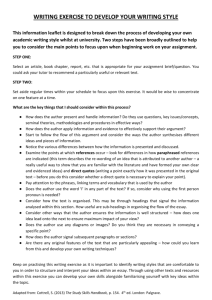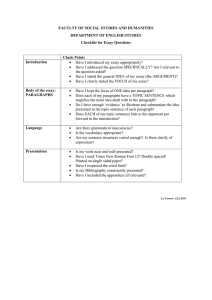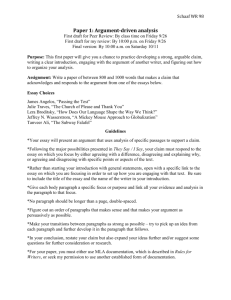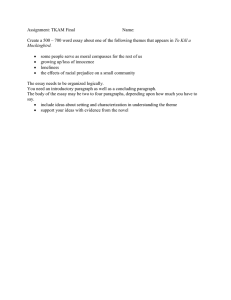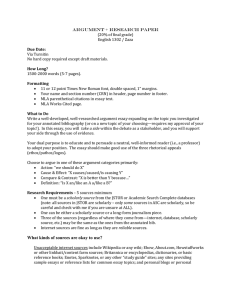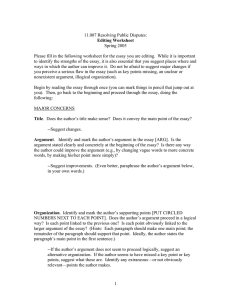21M.011 Essay #3 Thursday LENGTH: 8-10 pages
advertisement
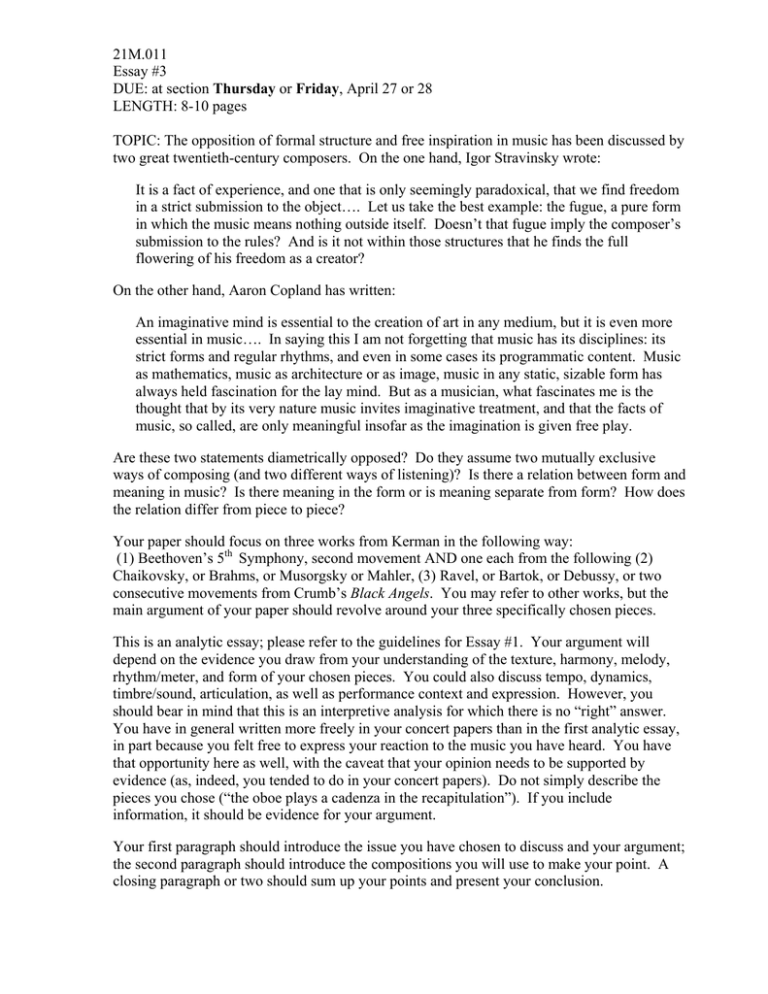
21M.011 Essay #3 DUE: at section Thursday or Friday, April 27 or 28 LENGTH: 8-10 pages TOPIC: The opposition of formal structure and free inspiration in music has been discussed by two great twentieth-century composers. On the one hand, Igor Stravinsky wrote: It is a fact of experience, and one that is only seemingly paradoxical, that we find freedom in a strict submission to the object…. Let us take the best example: the fugue, a pure form in which the music means nothing outside itself. Doesn’t that fugue imply the composer’s submission to the rules? And is it not within those structures that he finds the full flowering of his freedom as a creator? On the other hand, Aaron Copland has written: An imaginative mind is essential to the creation of art in any medium, but it is even more essential in music…. In saying this I am not forgetting that music has its disciplines: its strict forms and regular rhythms, and even in some cases its programmatic content. Music as mathematics, music as architecture or as image, music in any static, sizable form has always held fascination for the lay mind. But as a musician, what fascinates me is the thought that by its very nature music invites imaginative treatment, and that the facts of music, so called, are only meaningful insofar as the imagination is given free play. Are these two statements diametrically opposed? Do they assume two mutually exclusive ways of composing (and two different ways of listening)? Is there a relation between form and meaning in music? Is there meaning in the form or is meaning separate from form? How does the relation differ from piece to piece? Your paper should focus on three works from Kerman in the following way: (1) Beethoven’s 5th Symphony, second movement AND one each from the following (2) Chaikovsky, or Brahms, or Musorgsky or Mahler, (3) Ravel, or Bartok, or Debussy, or two consecutive movements from Crumb’s Black Angels. You may refer to other works, but the main argument of your paper should revolve around your three specifically chosen pieces. This is an analytic essay; please refer to the guidelines for Essay #1. Your argument will depend on the evidence you draw from your understanding of the texture, harmony, melody, rhythm/meter, and form of your chosen pieces. You could also discuss tempo, dynamics, timbre/sound, articulation, as well as performance context and expression. However, you should bear in mind that this is an interpretive analysis for which there is no “right” answer. You have in general written more freely in your concert papers than in the first analytic essay, in part because you felt free to express your reaction to the music you have heard. You have that opportunity here as well, with the caveat that your opinion needs to be supported by evidence (as, indeed, you tended to do in your concert papers). Do not simply describe the pieces you chose (“the oboe plays a cadenza in the recapitulation”). If you include information, it should be evidence for your argument. Your first paragraph should introduce the issue you have chosen to discuss and your argument; the second paragraph should introduce the compositions you will use to make your point. A closing paragraph or two should sum up your points and present your conclusion.


